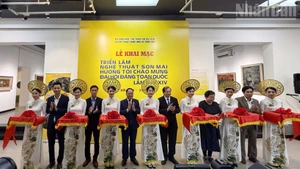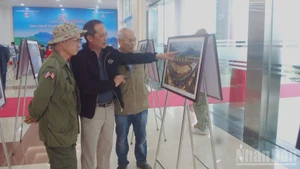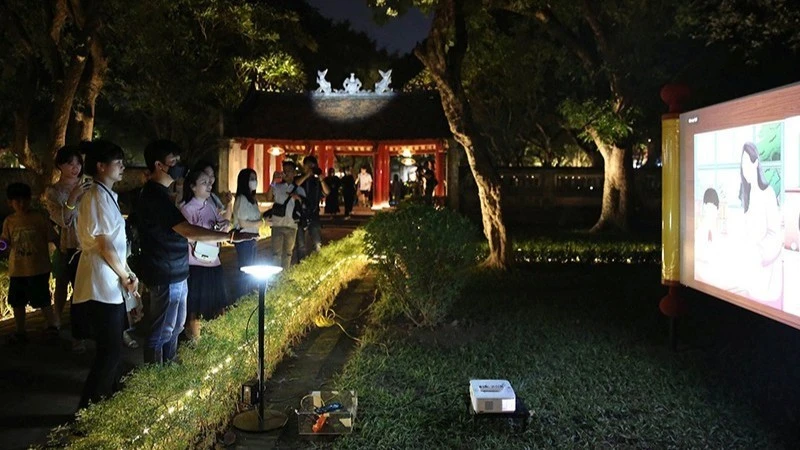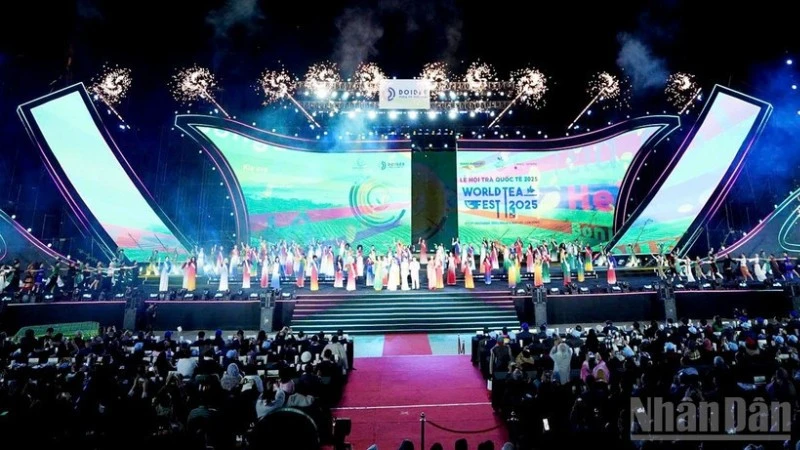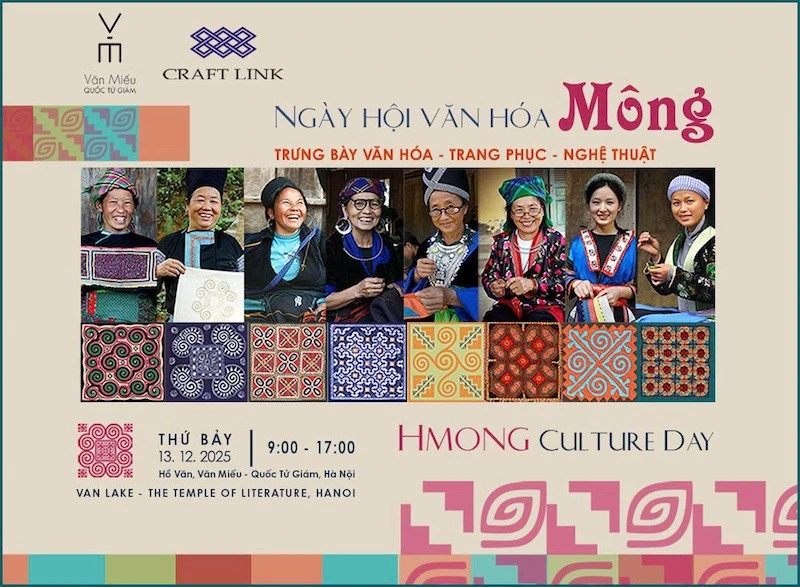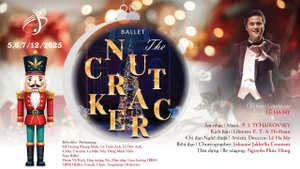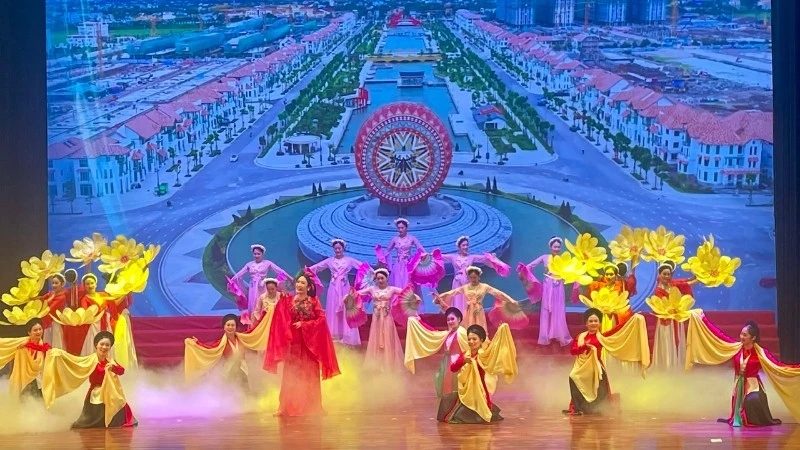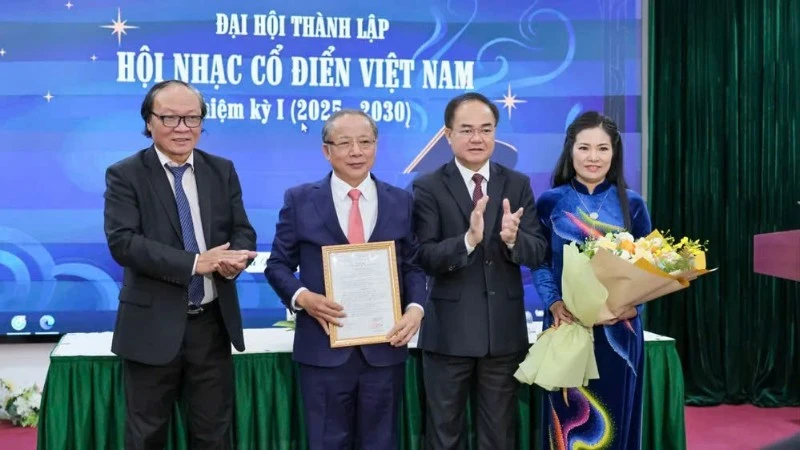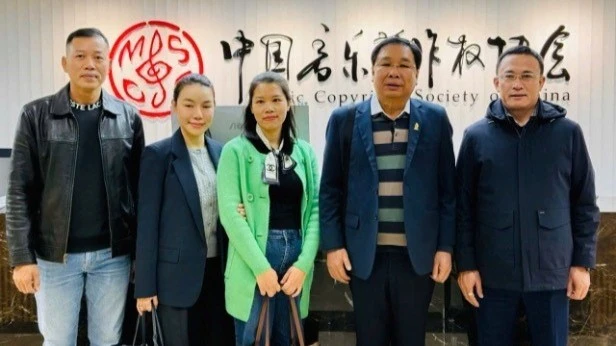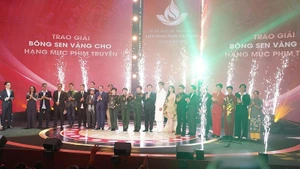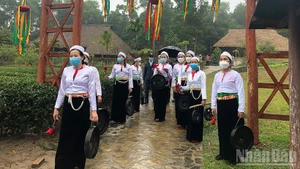Therefore, when "Dong Ho", the latest ballet of the Vietnam National Opera and Ballet was performed at the Hanoi Opera House, the audiences were surprised by the interesting combination of the beauty of the traditional folk painting and the world’s classical ballet language.
Just like Dong Ho paintings printed with different colour layers on do (Poonah) paper, the play was created by harmonisation of ballet, folk and contemporary dance languages.
Over an hour long, on the background of the symphony “New for Seasons”, compiled by contemporary classical composer Max Richter, from the original of the same name by Atonio Vivaldi (an Italian famous composer in the early 18th century), the play redrew the features of 11 famous Dong Ho paintings, with the body language by nearly 20 talented male and female actors and actresses.
In the play, “Hung dua” (Catching coconut), “Chan trau tha dieu” (Raising buffalo and flying kites), “Dam cuoi chuot” (The Rat's Wedding), “Danh ghen” (A touch of jealousy), etc., were no longer the static folk paintings, but were very vivid in the continuous movement and acclimatisation. Under the hand of Vietnamese-British choreographer Nguyen Ngoc Anh, who is currently working at the Hong Kong Academy for Performing Arts (China), the ballet "Dong Ho" did not focus on specific storytelling methods but led the audiences towards simplicity and sophistication, that conveyed in an abstract and perceptive manner.
Watching closely, audiences can realise that in some segments, the ending scene of this stage was used as the starting scene of the next stage, creating a hint of continuous connection and movement, contributing to the linkages among the stages and promoting the values of the messages related to "giving” and “receiving” throughout the play.
Choreographer Nguyen Ngoc Anh said: “I want to give Dong Ho paintings a new soul, with new brushstrokes, which are not just wooden moulds or costume design. With a sharp 'pen' created by the toes of the ballet artist's shoes, the public's emotions can reach and "touch" the new horizon of ballet arts, in pride of national traditional culture”.
According to him, each Dong Ho painting itself is rich in images and colours and has its own stories. Therefore, when expressing in dance language, the challenge was how to highlight the soul and typical Vietnamese charm contained in it.
That's why in only less than a month of working directly with the artists of the Vietnam National Opera and Ballet, choreographer Ngoc Anh required the actors and actresses to not only perform well in choreography skills, but also show the charisma and personalities of the characters through their eyes, facial expressions and gestures.
Enjoying the play, audiences can see the efforts in expressing the characters’ personalities by the artists, including Meritorious Artists Nhu Quynh, Phan Luong and Viet An.
Participating in many segments of the play, Meritorious Artist Phan Luong said in terms of choreography, the play exploited elements of classical European ballet, requiring the certainty of the artists’ legs and feet in shaping.
Meanwhile, the folk element requires flexibility, so the movements that use a lot of twisting and bending muscles in the upper parts of the artists’ bodies, were thoroughly mobilised to create the wave of the body in a series of continuous motions. Therefore, the actors and actresses must have good basic skills to continue to develop the movements.
With only simple tools such as paper fans and the black strings, as well as the connection and fusion in the bright colours of Dong Ho paintings and the typical motifs on the female actress's bibs, the play still created a visual impression for viewers, especially in the combination with light and image technology, creating an art space that was both familiar and new, as well as both traditional and modern.
This was not the first time that ballet, a classical European art form, has been used as a language to tell the story of Vietnamese culture. Previously, the Vietnam National Opera and Ballet performed “Ham Le Minh Chau”, a ballet inspired by the My Chau-Trong Thuy love story from the reign of An Duong Vuong. Choreographer Tuyet Minh also staged a ballet based on Vietnam’s 18th century poetic masterpiece ‘Tale of Kieu’ by celebrated poet Nguyen Du and it was performed by artists from the Ho Chi Minh Ballet, Symphony Orchestra and Opera.
This showed that folklore and national culture are always a constant source of inspiration. With “Dong Ho”, artists continued to assert that the “key” to pave the way for Vietnamese culture to step out into the world, is the new creative form, based on traditional cultural values. It is also a way to help the arts conquer the modern public, based on preserving and promoting the national cultural quintessence.


